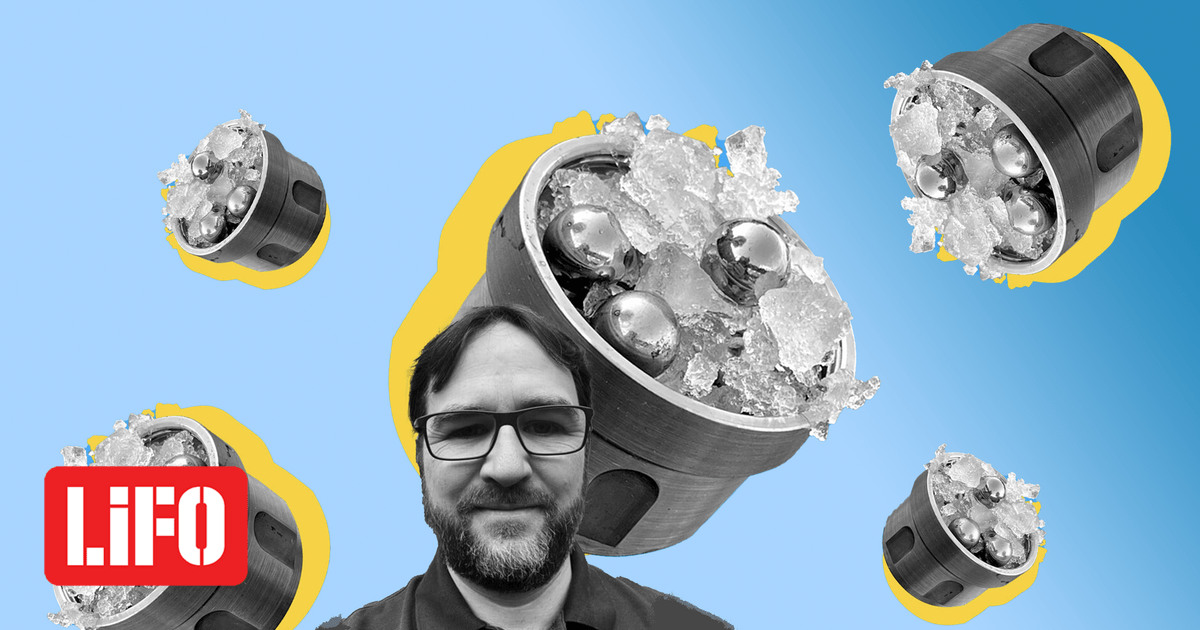
What is more commonWhat is more than plain water? It is so common in developed societies that we now take it for granted. However, water is one of the strangest substances in the universe, allowing us to exist.
One of its “abnormalities” is the increase in its density when it freezes. Thanks to this property, it floats in the sea and in extreme cold acts as a protective shell for bottom creatures. If this did not happen, our world would be completely different.
This form of it is called crystal ice. However, there is another type of frozen water called amorphous ice and it can be of low density or high density.
Liquid water is a very strange liquid indeed. We are all familiar with it, it is all around us. But if we look at the rest of the liquids, we will understand that they behave very strangely. There are many “anomalies” that we still don’t fully understand.
the Christoph J. Saltzman, Professor of Physical and Materials Chemistry in the Department of Chemistry at University College London (UCL), jointly with Alexander Russo-Vinson, Michael B. Davies, Alfred Amon, Han Wu, Andrea Sella, and Angelos Michaelidis discovered another, previously unknown type of amorphous ice, which they named MDA.
the MDA the Amorphous ice of medium density It is amorphous ice of medium density. Professor Salzmann spoke exclusively to LiFO, explaining what they discovered and how it relates to what we know about liquid water. He was, and I’m sure still is, excited to have discovered them – and rightly so.
– We know that water turns into ice at low temperatures. But you succeeded in creating a new form of ice.
Basically, we did a simple experiment. We took a small metal container and put it in regular snow, which we all know, but we also added another very important thing, some steel balls. We shook this mixture very vigorously at -200°C.
We assumed somewhat naively that we were going to make very small ice crystals. This is probably the prediction most researchers would have made. However, we found not only that, but a new type of amorphous ice!
So the ice crystals, their arrangement, were completely destroyed. At the same time, the ice density increased, which is another surprising result of our experiment!
– From what I’ve read, I named this medium-density amorphous ice (MDA), which in Greek translates to medium-density amorphous ice. So, is there any other form of ice than the one we are familiar with?
There’s the crystalline form, in which the molecules are neatly arranged to create the familiar shape of ice. Amorphous means that it does not have a crystalline structure, it is more or less like a liquid. For amorphous ice, what we knew is that there are two types: low density and high density.
And it was a fairly common acknowledgment in the scientific community that there is nothing in between. What we finally found out was that it did exist and we called it MDA. I should also point out that low density amorphous ice is the most common form of ice in the entire universe.
We’ve tried many other materials, but we’ve never tried snow and this result is hopeless. So it was one of those “let’s do it and see what happens” experiments.
Under what conditions does amorphous ice of low density form?
In space it is created in conditions of extremely low temperatures and extremely low pressure.
– And what form of amorphous ice did you make?
with dust. All types of ice, whether amorphous or crystalline, are white. Looking at them you might not even know the difference. But the physical properties of amorphous ice are very different from those of ordinary ice.
– What are these differences?
When heated, for example, it releases a large amount of heat. If you heat it up to normal pressure, it reverts back to its crystalline form. In this transformation, a lot of heat is released.
– Are bonds between water molecules broken in amorphous ice?
Hydrogen bonds have been changed. It is not destroyed.
– Did you do any other experiment and finally get this result? Because I read that this was not your main goal.
No, we just have the tools in the lab to do these kinds of experiments. And one day we said, “Let’s try snow too.” We’ve tried many other materials, but we’ve never tried snow, with this result being hopeless. So it was one of those “let’s do it and see what happens” experiments.
What the spheres do inside the metal container where the experiment takes place is simulate some strong forces that could be exerted on the material in other ways. Photo: Christoph Salzmann
– What does this amorphous ice have to do with what we call the “glassy state of liquid water” (that is, the amorphous solid state)?
This is our big question. When we created MDA, we did some density measurements and found something interesting: its density is very similar to that of liquid water.
So hydrogen bonds change and its density is similar to liquid water. So is it just liquid water at a very low temperature? This question needs clarification and this is the interesting thing about our discovery. Because if we understand what MDA really is, there is a chance that we will finally understand what liquid water is.
Liquid water is a very strange liquid indeed. We are all familiar with it, it is all around us. But if we look at the rest of the liquids, we will understand that they behave very strangely. There are many “anomalies” that we still don’t fully understand.
– Would you like to give us an example?
The more liquid you squeeze, the harder it usually becomes, which is hard to understand. But this is not the case with water. You start compressing it and at some point the process gets easier and easier.
Also, if you cool the water, there comes a point after which it stops expanding. In contrast, if you cool any other liquid, it is constantly shrinking.
– So is turning into this type of ice an exclusive property of water, or can we find it in other substances as well?
I think it is the exclusive property of the water.
The molecular structure of the new ice is similar to that of liquid water (image on the left), compared to the molecular structure of ice as we know it (image on the right). Image: University of Cambridge
– Can we find it on Earth somewhere or on other planets?
First of all, let me explain why we created this particular experimental setup. What the spheres do inside the metal container where the experiment takes place is simulate some strong forces that could be exerted on the material in other ways.
You create turbulence, pulling one molecule off another, shifting its position relative to another when the steel ball hits the crystals. We have shown the same thing with computer simulations. As long as you exert strong forces on matter, even digitally you get the same kind of ice, MDA.
We also have strong forces on the icy moons of our solar system. The ice on the moons of gas giants, such as Jupiter or Saturn, is subject to strong gravity from their planets. So we think MDA can be found there as well, in the thick icy shells of some of the moons.
– What technological applications could this have?
We operate at -200°C, and very low temperatures. I don’t think there can be any commercial application. Maybe we can make use of MDA for ice in drinks or something. (He laughs)
I think it will be difficult. It’s basically a scientific discovery. Perhaps there is an application in geology. However, I do not anticipate any sale of the material in the near future.
– So is it something that mainly contributes to our knowledge?
I think it helps understand the strange behavior of liquid water. This is one side. The other has to do with understanding the icy moons, as I mentioned above, in our solar system. Perhaps through MDA we can understand the geology of these frozen satellites.

“Avid problem solver. Extreme social media junkie. Beer buff. Coffee guru. Internet geek. Travel ninja.”





More Stories
Intel discontinues 13th generation Core K (Raptor Lake) series processors – Intel
iPhone 16 Pro will bring an important change!
With better ray tracing and 60fps in select games, the PS5 Pro will likely come late this year